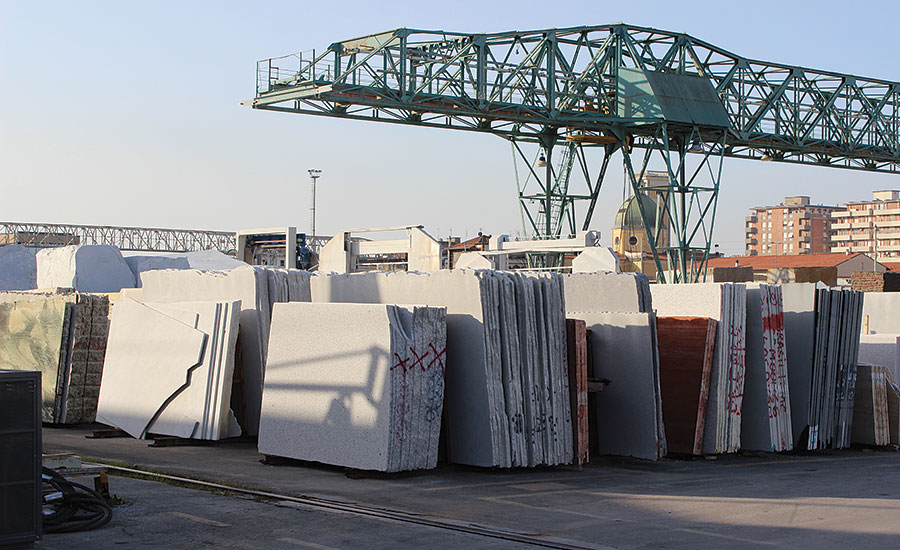For fabricators, installers, and stone professionals ready to elevate their operations with smarter tools and sharper insights.

From Craftsmanship to Technology: The Evolution of a Timeless Industry- Understanding Core Stone Materials
Granite
Marble
Quartzite
Processing Journey: From Quarry to Countertop
Transforming raw stone blocks into finished surfaces involves precision engineering and specialized equipment.
Extraction
Stone blocks are extracted from quarries using diamond wire saws, pneumatic drills, or controlled blasting methods. This stage requires precise planning to maximize usable material and preserve structural integrity.
Block Dressing
Once removed from the quarry, the raw blocks are trimmed into more manageable sizes using primary saws. This makes them ready for slab production or further processing.
Slab Cutting
Large blocks are sliced into thin, flat slabs using gang saws or multi-wire saws. These slabs are then calibrated to achieve consistent thickness across the surface.
Surface Finishing
Depending on design requirements, slabs undergo polishing, honing, flaming, leathering, or bush hammering to achieve the desired texture and visual appeal.
Quality Control
Each slab is inspected for natural defects such as cracks, discoloration, or structural inconsistencies. Reinforcement mesh or resin is applied as needed to strengthen the material.
Fabrication
CNC routers, waterjet cutters, and bridge saws shape the slabs for installation—cutting sink holes, edges, and miters with millimeter precision.
Handling & Safety
Lifting equipment—slab lifters, vacuum lifters, scissor clamps—ensures slabs are moved safely and efficiently between stations. Mishandling not only risks product loss but also endangers workers.
Packaging & Transport
Finished slabs are cleaned, labeled, and packed into steel A-frames or shipping crates for transit. Rubber padding, locking arms, and bracing systems minimize risk during loading and delivery.
According to the Natural Stone Institute, “stone fabrication efficiency has improved 40% in the past decade thanks to digital templating and automation.”
Equipment That Powers the Process
Technology is not a luxury—it’s the backbone of modern stone operations. The following equipment categories are essential for lifting, transport, installation, and display:
Lifting Devices: Safety Meets Efficiency
Handling heavy stone slabs manually is dangerous and inefficient. Lifting devices are critical in preventing injury and material damage.
Slab Lifters
Slab lifters are precision-engineered tools for handling stone slabs without causing damage. With features like auto-locking grips, rubber-coated jaws, and compact construction, they accommodate a range of material thicknesses. Commonly used in stone fabrication and construction, these lifters streamline the safe transport and accurate placement of large-format surfaces.
Vacuum Lifters
Designed for non-porous, smooth surfaces like granite or quartz, vacuum lifters use suction pads powered by pneumatic or electric vacuum pumps. They offer superior holding strength without applying pressure to slab edges. This reduces the risk of chipping, especially when handling polished stone. Many models allow for vertical or horizontal lifting with tilt and rotation functions.
Scissor Lifters
“Using dedicated lifters not only protects the stone but dramatically reduces the risk of back strain, crushed fingers, and product returns due to damage.” – Safety Officer, East Coast Granite
